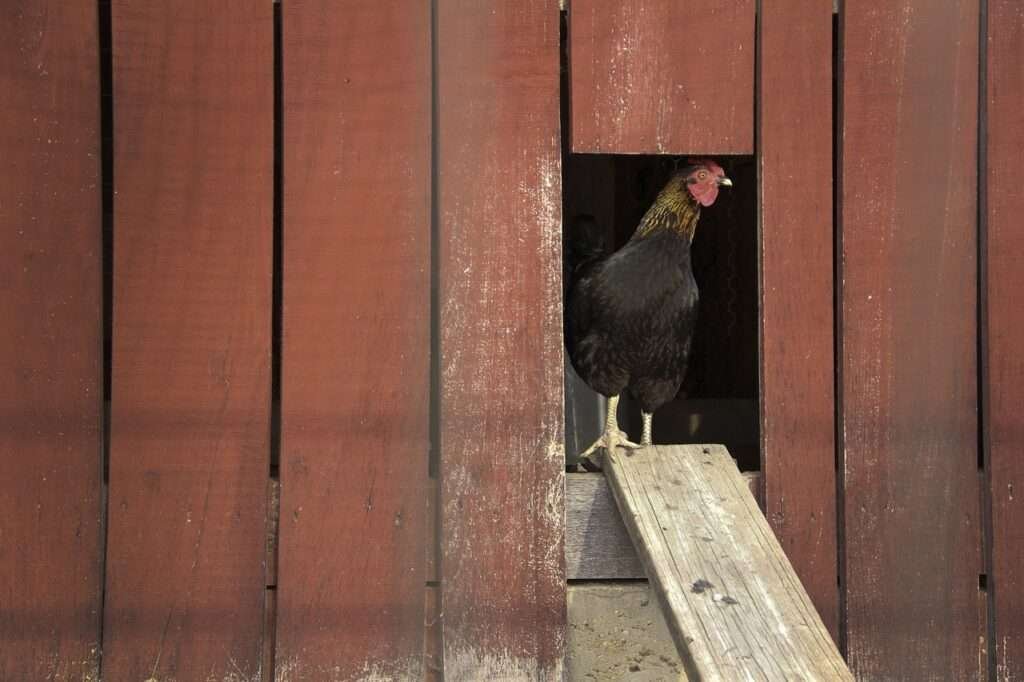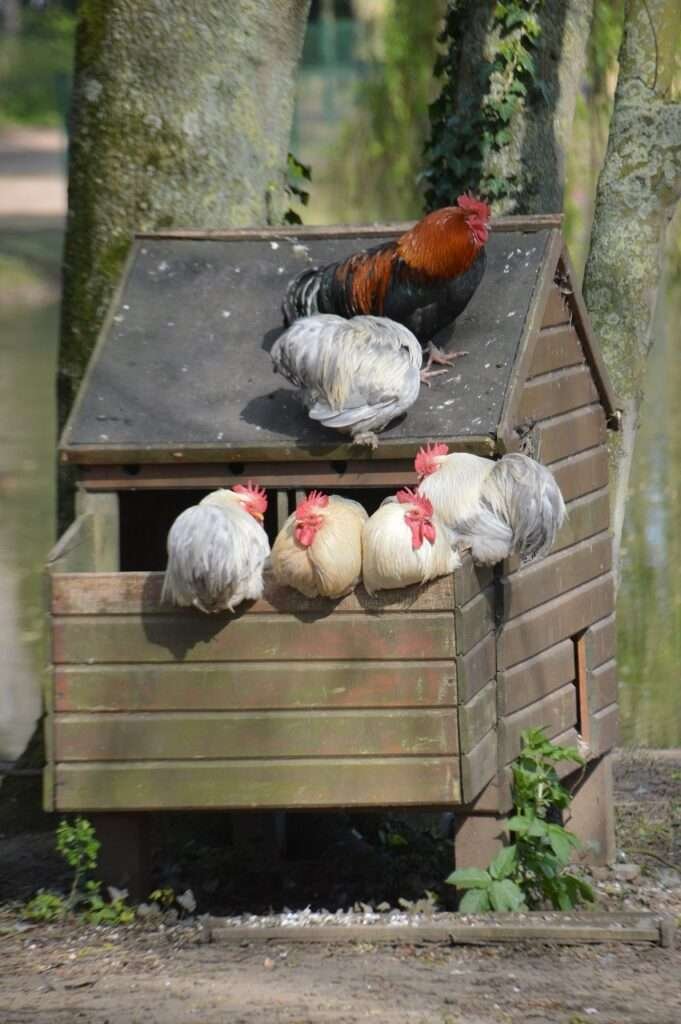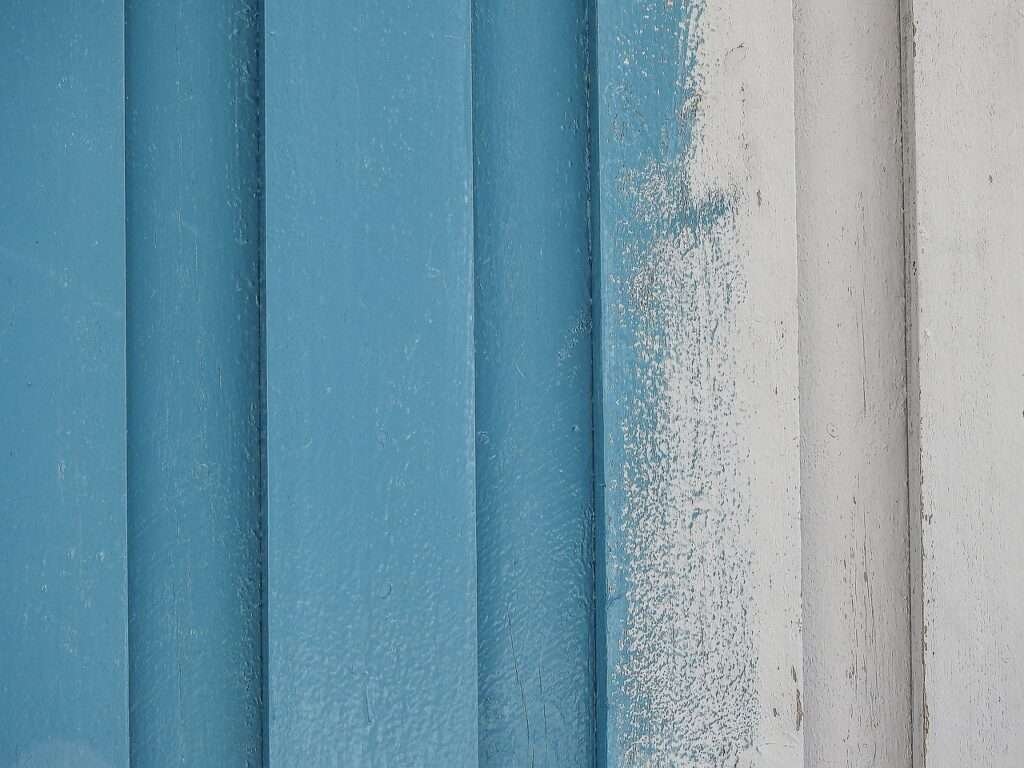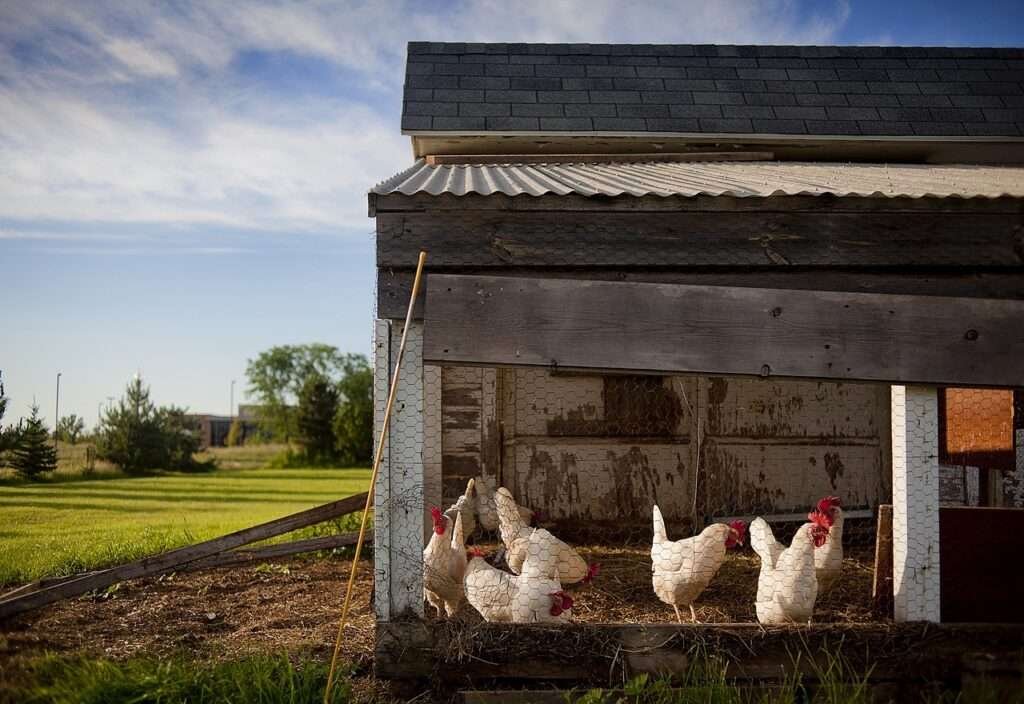When it comes to caring for your backyard chickens, few tasks are as vital as maintaining a well-constructed and thoughtfully designed coop. While structural integrity and proper ventilation are crucial, one often-overlooked aspect of coop management is the paint you choose to coat your feathered friends’ home. Painting your chicken coop serves multiple purposes, from protecting the wood against the elements to creating a visually appealing and clean environment for your birds. But there’s more to coop paint than meets the eye. In this guide, we will explore the importance of painting your coop, how coop color can influence chicken behavior and stress levels, what to consider when selecting the best paint for your chicken coop including colors for a bright, clean, and stress-free chicken coop.
Why Use Paint for Your Chicken Coop?
Before delving into the details of coop paint selection, it’s essential to understand why painting your chicken coop is a critical aspect of poultry husbandry.
Protection Against the Elements and Wood Deterioration
Chicken coops are exposed to a wide range of weather conditions, from scorching summers to damp winters. Unprotected wood can quickly deteriorate, leading to structural weaknesses that compromise the safety of your chickens. Coop paint acts as a protective barrier, shielding the wood from rain, snow, sun, and humidity. This preservation not only prolongs the life of your coop but also ensures a secure and reliable home for your flock.
Preventing Pests and Parasites
Paint for your chicken coop also helps deter unwanted guests in the form of pests and parasites. Mites and other insects often seek refuge in the cracks and crevices of unpainted wood. A well-sealed and painted coop provides fewer hiding places for these nuisances, reducing the risk of infestations that can harm your chickens.
Aesthetic Appeal and Personalization
Beyond its practical benefits, paint for your chicken coop allows you to personalize your chicken coop and create an aesthetically pleasing space. Choosing colors that complement your outdoor environment or match your home’s exterior can enhance the overall look of your property. A well-painted coop can be a charming addition to your backyard.
Hygiene and Ease of Cleaning
Cleanliness is paramount when it comes to chicken coops. Coop paint, especially when applied correctly, creates a smooth and washable surface. This ease of cleaning makes it simpler to maintain a healthy and sanitary environment for your chickens. It’s much easier to scrub off dirt, droppings, and other debris from painted surfaces than it is from bare wood.
In the next section, we’ll explore the fascinating realm of color psychology and how the color of your chicken coop can influence the stress levels and well-being of your feathered companions. Understanding this aspect can help you create a coop that promotes chicken comfort and contentment.

How Paint For Your Chicken Coop Color Affects Chicken Stress Levels
The color of your chicken coop might seem like a purely aesthetic choice, but it can have a surprisingly significant impact on the stress levels and well-being of your feathered friends. Color psychology plays a role in the way chickens perceive their environment, and selecting the right colors can contribute to a serene and stress-free coop.
The Science Behind Color Psychology in Chickens
Chickens have well-developed color vision, and they can see a broader spectrum of colors than humans. Research suggests that chickens are more sensitive to short-wavelength colors like blue and green. Understanding how chickens perceive colors can help us choose hues that promote their comfort and happiness.
Calming Colors for Stress Reduction
If your goal is to create a coop environment that minimizes stress and anxiety for your chickens, consider using calming colors. Shades of pale blue and green are often associated with tranquility and relaxation. These colors can have a soothing effect on chickens and promote a sense of calm.
Colors to Avoid for Chicken Coop Tranquility
While some colors have a calming influence on chickens, others may have the opposite effect. Bright, vibrant colors like red and orange can be stimulating and potentially stressful for chickens. These colors may increase agitation and anxiety in your flock.

Finding the Balance Between Aesthetics and Chicken Comfort
Balancing aesthetics with chicken comfort is essential when choosing coop colors. While you may have personal preferences for coop aesthetics, it’s crucial to consider the well-being of your chickens first. Opting for calming and soothing colors that promote relaxation can contribute to a healthier and happier flock.
Choosing the Right Paint Type
Selecting the right type of paint for your chicken coop is crucial for both the safety of your chickens and the longevity of your coop’s appearance. Here are some essential considerations when it comes to choosing the right coop paint:
The Dangers of Leaded Paints for Chickens
One of the foremost considerations when choosing coop paint is the safety of your chickens. Avoid using paints that contain lead or other toxic substances. Chickens are notorious for pecking at surfaces, including the ground and coop walls. If they ingest lead-based paint chips or dust, it can lead to lead poisoning, a severe and potentially fatal condition. Always opt for non-toxic, lead-free paints to ensure the well-being of your flock.
Benefits of Using Outdoor Paint Designed for Home Exteriors
Coop paint must withstand the rigors of outdoor exposure. To ensure the longevity of your coop’s finish, choose outdoor paint specifically designed for home exteriors. These paints are formulated to resist the effects of weathering, including UV rays, moisture, and temperature fluctuations. They are more durable and can protect your coop from premature deterioration.
Paint Durability and Resistance to Weathering
Durability is a key factor in selecting coop paint. Your chicken coop is exposed to the elements year-round, and it needs a paint that can endure these conditions. Look for paints labeled as “exterior” or “all-weather.” These paints are designed to provide long-lasting protection against rain, snow, sunlight, and temperature variations.
Sustainable and Non-Toxic Paint Options for Eco-Conscious Chicken Keepers
For eco-conscious chicken keepers, there are sustainable and non-toxic paint options available. These paints are made with environmentally friendly materials and do not emit harmful fumes or volatile organic compounds (VOCs). They are an excellent choice for those looking to minimize their environmental impact while still providing a safe and attractive finish for their coop.

Best Paint for Your Chicken Coop Colors for Brightness, Cleanliness, and Stress Reduction
Now that you understand the importance of coop paint and have chosen a suitable type, it’s time to consider the best coop paint colors for brightness, cleanliness, and stress reduction:
White and Light Shades: Reflecting Heat and Promoting Cleanliness
Light-colored paints, particularly white, have several advantages for chicken coops. They reflect heat, helping to keep the interior cooler during hot summer months. Light colors also make it easier to spot dirt, droppings, or signs of pests, contributing to a cleaner and more hygienic environment.
Pale Blues and Greens: Creating a Serene and Stress-Free Environment
As previously discussed, pale blues and greens are calming colors that can have a soothing effect on chickens. These colors contribute to a serene and stress-free coop environment, promoting the overall well-being of your flock. Consider shades like sky blue or mint green for a tranquil atmosphere.
Contrast for Safety and Ease of Cleaning
In addition to selecting calming colors, it’s essential to incorporate contrast into your coop’s design. Contrasting colors can help chickens distinguish between different areas of the coop and prevent accidents. For example, a contrasting color for nesting boxes or perches can make them more visible to your chickens. Additionally, contrasting colors can help you identify areas that require cleaning or maintenance.
Coordinating with Your Outdoor Space for a Cohesive Look
Finally, consider how your coop’s color scheme fits into your outdoor space. Coordinating the coop’s colors with your landscaping, home exterior, or other outdoor structures can create a cohesive and visually pleasing look for your property.
Incorporating these considerations into your coop paint selection process will help you create an attractive, safe, and stress-reducing environment for your chickens. Once you’ve chosen the right paint and color, proper application and maintenance are crucial to ensure the longevity of your coop’s appearance and functionality.

Application and Maintenance Tips
Proper Preparation and Priming: Before applying paint, ensure that the coop’s surfaces are clean, dry, and free from dirt, dust, and loose paint chips. Properly prime any bare wood to promote paint adhesion and durability.
Applying Multiple Coats for Durability: To achieve a long-lasting finish, apply multiple coats of paint, following the manufacturer’s instructions for drying times between coats. Multiple coats provide better coverage and protection against the elements.
Regular Maintenance and Touch-Ups: Coop maintenance doesn’t end with the initial painting. Regularly inspect your coop for signs of wear, peeling, or damage to the paint. Touch up any areas that require attention to maintain the paint’s protective qualities.
Ensuring Adequate Ventilation During and After Painting: Proper ventilation is crucial when applying paint, especially if you’re using paint with VOCs. Ensure that the coop is well-ventilated during painting, and allow adequate time for the paint to dry and off-gas before introducing your chickens.
Choosing the Right Paint For Your Chicken Coop
Incorporating the right paint for your chicken coop not only enhances its appearance but also plays a vital role in the well-being of your flock. By prioritizing safety, durability, and the calming effects of color, you can create a coop that promotes a stress-free environment for your chickens and complements the overall aesthetics of your property. With proper paint selection, application, and maintenance, your chicken coop can be both functional and beautiful, contributing to a happy and healthy poultry-keeping experience.

1. What is the best time of year to paint my chicken coop?
- Spring and early summer are generally ideal, as the weather is mild and paint can dry properly. Avoid extreme heat or cold.
2. Can I use regular interior paint for my coop?
- It’s best to use exterior-grade paint designed for outdoor use, as it provides better weather resistance and durability.
3. How can I protect my chickens while painting the coop?
- Ensure chickens are temporarily relocated to a safe and well-ventilated area away from the fumes until the paint is completely dry and fumes have dissipated.
4. Do I need to prime my coop before painting it?
- Yes, priming bare wood surfaces is essential to promote paint adhesion and enhance durability.
5. Can I paint over old, peeling paint on my coop?
- It’s possible, but proper surface preparation is crucial. Remove loose or peeling paint, sand the surface, and apply a suitable primer before painting.
6. What are the advantages of using non-toxic paints for my coop?
- Non-toxic paints are safer for chickens and the environment. They reduce the risk of chemical exposure and potential harm to your flock.
7. Should I paint the interior of the coop as well?
- Yes, painting the interior protects wood surfaces from moisture and makes cleaning easier. Use light colors to enhance visibility.
8. Can I paint the chicken nesting boxes, and if so, what color is best?
- Yes, painting nesting boxes is advisable. Use a contrasting color to make them easily visible to hens, typically a light color like white or pale blue.
9. How often should I repaint my chicken coop?
- Repaint as needed, usually every 3-5 years, depending on the paint type, climate, and wear and tear.
10. Are there eco-friendly paint options for chicken coops? – Yes, there are eco-friendly, low-VOC paints available that are safer for both chickens and the environment. Consider these options for a more sustainable coop painting project.






